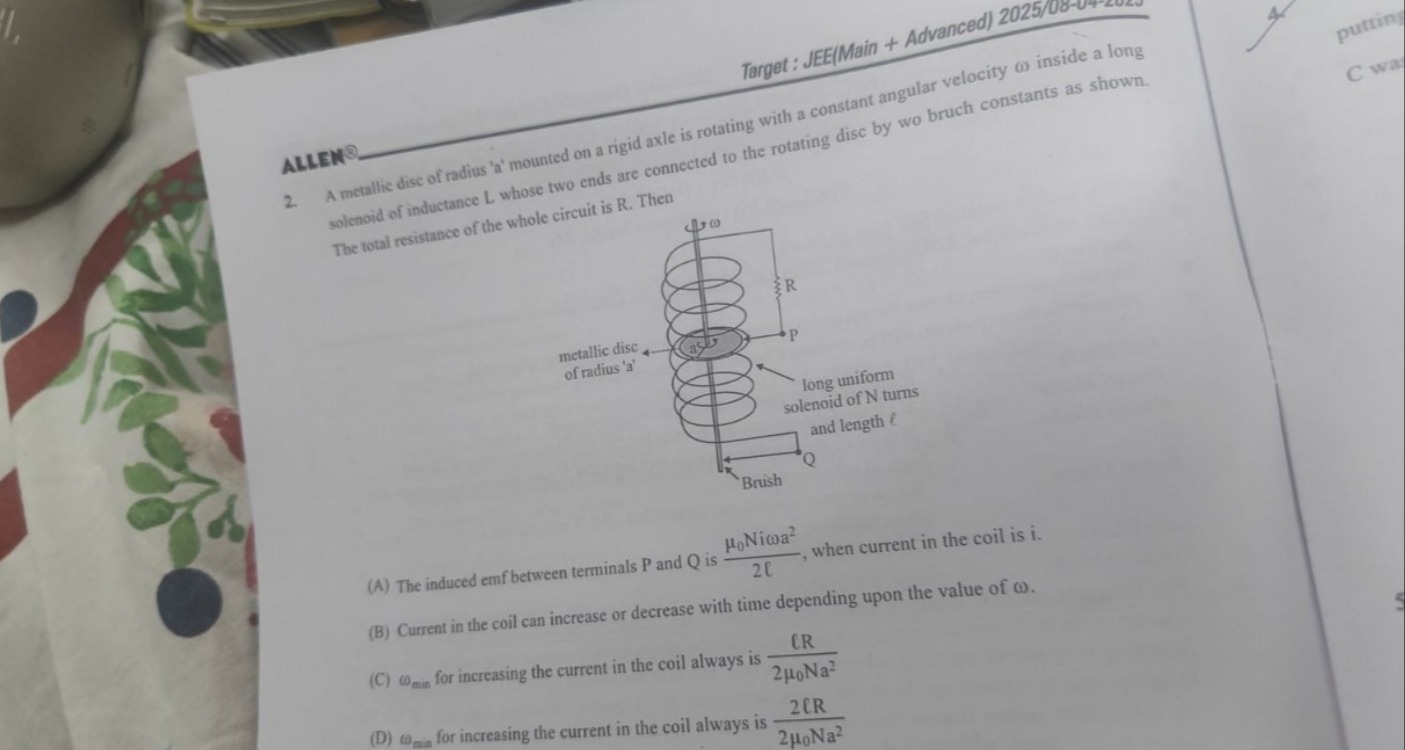Question
Question: A metallic disc of radius 'a' mounted on a rigid axle is rotating with a constant angular velocity $...
A metallic disc of radius 'a' mounted on a rigid axle is rotating with a constant angular velocity ω inside a long solenoid of inductance L whose two ends are connected to the rotating disc by wo bruch constants as shown. The total resistance of the whole circuit is R. Then

The induced emf between terminals P and Q is 2lμ0Niωa2, when current in the coil is i.
Current in the coil can increase or decrease with time depending upon the value of ω.
ωmin for increasing the current in the coil always is 2μ0Na2lR
ωmin for increasing the current in the coil always is 2μ0Na22lR
Options (A) and (B)
Solution
-
Induced emf in the disc:
A point at a distance r from the center has speed ωr so a small emf dε = Bωr dr is induced. Integrate from r = 0 to a:
ε = ∫₀ᵃ Bωr dr = ½ Bωa². -
Magnetic field from the solenoid:
Inside a long solenoid, B = μ₀(N/l) i. Hence,
ε = ½ (μ₀(N/l)i) ωa² = (μ₀N ω a²)/(2l) i.
This exactly matches option (A). -
Circuit equation:
The loop (with inductance L and resistance R) follows
L(d i/dt) + Ri = (μ₀N ω a²)/(2l) i.
Thus,
d i/dt = i [(μ₀N ω a²)/(2l) – R] / L.
So if (μ₀N ω a²)/(2l) > R the current grows, whereas if it is less than R the current decays.
This is what option (B) states. -
Threshold angular velocity:
Setting the condition for self-excitation,
(μ₀N ω a²)/(2l) = R ⟹ ω = (2lR)/(μ₀N a²).
Neither option (C) nor (D) matches this expression (option (C) gives ω = lR/(2μ₀Na²), and (D) simplifies to ω = lR/(μ₀Na²)). Hence options (C) and (D) are incorrect.
